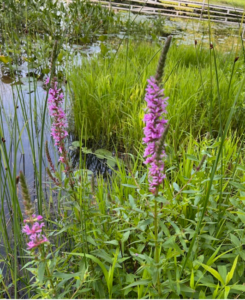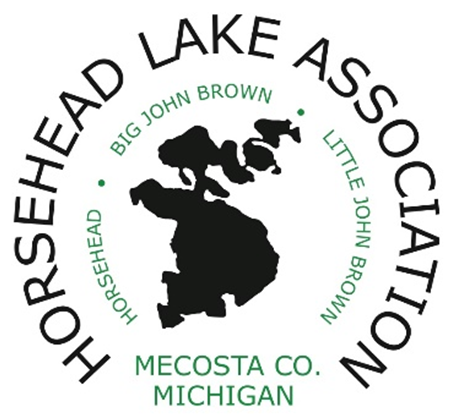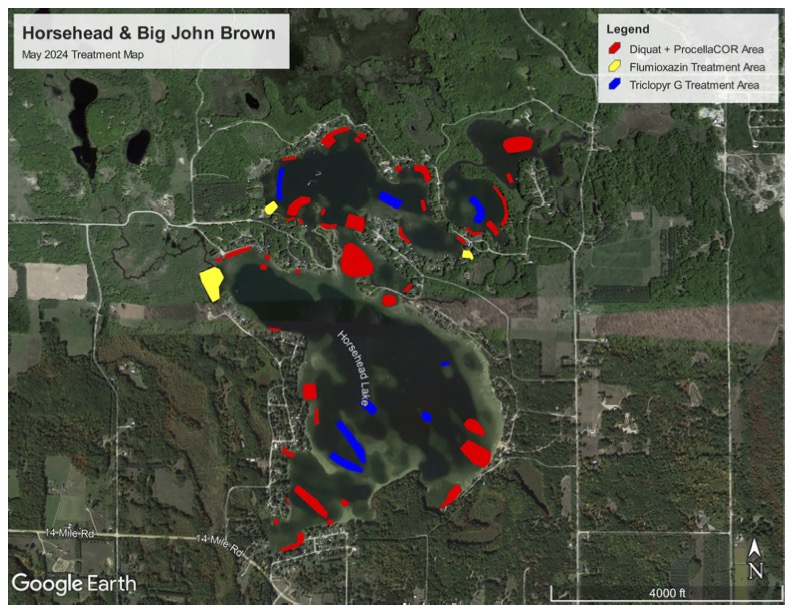2025 BOAT SHRINK WRAP RECYCLING PROGRAM
Recycle Run 2025 – Boat Shrink-Wrap Recycling
It’s that time of year again to turn your boat shrink-wrap into something new, such as composite decking, by taking advantage of this easy recycling program!
Horsehead Lake Association (horseheadlake.org), along with EMS Boat Transport & Storage (emsboatstorage.com) and the Michigan Recycling Coalition (michiganrecycles.org/film-plastics/), are proud to participate in Recycle Run 2025, a program dedicated to recycling boat shrink-wrap instead of sending it to landfills.
How It Works:
Purchase a Recycling Bag – Contact Debbie Hill (937-829-7279) to purchase a recycling bag for $7.
Remove & Prep – Each EZ-Fill Recycling Bag comes with a zip tie to seal the bag, along with instructions on how to remove your boat covers. (Make sure you remove all zippers, buckles, and vents before packing your bag & try to keep the shrink-wrap as clean as possible.) Then stuff your EZ-Fill Bag with your boat wrap. Note that the recycling bags are industrial size and can hold covers from up to a 32’ boat (1 large cover or 1-3 small covers).
Drop It Off – Fill the bag with your shrink wrap and drop it off at EMS Boat Transport & Storage, 9375 11 Mile Rd, Mecosta, MI 49332. You may leave it at their barn or in the semi-trailer (when it arrives there soon).
The Michigan Recycling Coalition will collect the bags from EMS and transport them to a recycling facility on the west side of Michigan, where they will be transformed into new products such as TREX decking—a durable, eco-friendly material!
For every bag, we save:
- 115 kWh of energy
- 13.5 gallons of oil
- 16-20 cubic feet of landfill space
Boat Owners – Let’s Keep It Green! Spread the word! Let’s work together to keep Horsehead, Little John Brown & Big John Brown Lakes clean and protect our environment. Every recycled shrink-wrap makes a difference!
2024 PURPLE LOOSESTRIFE SEASON
Michigan Lakefront Solutions will begin to treat the lakes for purple loosestrife today, August 13. They will start on the John Brown Lakes and continue to work around the lake throughout the week and into next week as weather permits.
The herbicide is applied directly to the loosestrife flowers. Avoid contact with the plants for 24 hours. Swimming and other water activities are not impacted by this treatment, only the actual blossoms are treated.
More information…
Back in 2018, the HLA initiated a campaign to rid Horsehead and the John Brown Lakes of purple loosestrife (PL), a particularly prolific invasive plant species. As the name suggests, the flowers are a brilliant purple on tall, spiky stems. The plants tend to grow in clumps along the shoreline. Each clump is capable of dropping thousands of seeds so tiny they can be distributed by wind or water current. The 2018 campaign was very successful, but pockets of PL still pop up in areas that haven’t been treated before or where we don’t have permission to treat. Purple loosestrife is beginning to bloom now. If you have just a few plants, it is very easy to pull or dig them up and then burn in your campfire. If you feel that there are more plants than you can handle please send an email to tbakewell @ horseheadlake.org, and we will forward to our applicator, Michigan Lakefront Solutions (MLS). Note: If the plants are on land, MLS must have written permission to spray. If you submitted a permission slip in 2018, you do not need to submit a new one. If the plants are rooted in water, we don’t need permission, but we still need the address.
Click here: Permission Slip

2023 CLMP LAKE DATA / TREND REPORT
This is the latest Cooperative Lakes Monitoring Program report showing trends for Horsehead Lake. Please click on this link to view in PDF format: CLMP-Horsehead Lake 2023
2024 LAKE TREATMENT ANNOUNCEMENT
On May 23, Michigan Lakefront Solutions (MLS) surveyed the Horsehead/John Brown Lakes for invasive plant species. This year, board members Bruce Costen and Terry Bakewell attended the survey for the first 2 hours. The survey consists of methodical visual analysis of the littoral zone around the entire lake system as well other shallow water spots that have been known known to hold Eurasian watermilfoil (EWM).
This year’s survey resulted in a good news/bad news report. The good news: there was less EWM this year in the larger parts of Horsehead. The bad news: there was a fairly significant increase in the John Brown Lakes. More good news: Starry Stonewort has not emerged yet. That doesn’t mean it has been eliminated – just means that it is getting a later start in 2024.
Weather permitting, MLS will treat a total of about 41 acres this week, perhaps as early as Tuesday, June 4. At this writing, the weather forecast is calling for rain. In that case treatment could take place Wednesday, June 5 or Thursday, June 6. As is always the practice, MLS will place notices on all waterfront lots the day prior treatment. It is interesting to note the number of acres treated has been consistent for the last few years. In 2022 we treated 42.5 acres, in 2023 we treated 44 acres.
A map showing the areas to be treated this year is shown below.
Interesting article on inland lakes and wake boats:
https://www.mlive.com/news/2022/09/michigan-dnr-eyes-inland-lake-restrictions-on-wakesurfing-boats.html
Horsehead Lake Temperature and Clarity Report 8-11-22
Here is the latest report in pdf format: Temperature_DO REVISED 8 11 22
The 2021 Cooperative Lakes Monitoring Program report is available, and contains data on various water quality components of the lake. To read the full report, please click on the link below.
Purple Loosetrife weed control treatment permission form.
Purple Loosetrife is another invasive species plant that has been found on and near Horsehead Lake. Please see the attached link for pictures and information from the State of Michigan: Purple Loosestrife Information.
If you have Purple Loosestrife on your shoreline, and would like it treated by the weed control applicator, please download, print, and fill out the permission slip below, then mail to the Horsehead Lake Association, P.O. Box 344, Mecosta, MI 49332
Click here: Permission Slip
—————————————————————————————————-
ADDRESS CHANGES: Keeping addresses current is a big problem… if your mailing address has changed in the past year, or will change in the near future, please contact TERRY BAKEWELL at 616-238-1114 or TBakewell@horseheadlake.org. Also if you have installed a new well in the last 2 years, please notify Terry so a new well permission slip can be updated.
Thank you from the Horsehead Lake Association.
—————————————————————
A Message from our Loon Ranger:
Please keep an eye out for the loons on Horsehead Lake… The best thing we can do to help facilitate loon nesting is to stay away from the nest sites. Even kayaking near the nest can frighten off the pair. If you see them, please stay away.
The first treatment occurred on June 14, 2007, and has continued each year since… here are some photos of the process:
About Eurasian Watermilfoil on Horsehead Lake
The Horsehead Lake Association members along with other property owners have surveyed the Lakes for the past several years. These surveys were conducted to determine if any invasive species aquatic plants have moved into the Lakes. Unfortunately, the Lakes are infested with Eurasian Watermilfoil, a very aggressive, fast growing plant.
You may know the Tri-Lakes of Mecosta, Blue, and Round chemically treat and mechanically cut weeds in those lakes each year. Chippewa Lake embarked on a chemical treatment program for watermilfoil last year. Clear lake is starting a treatment program this coming year. This Eurasian Watermilfoil has been all around our lakes. NOW BIG and LITTLE JOHN BROWN and HORSEHEAD, OUR LAKES, HAVE IT!
This situation, indeed invasion, demands immediate action to control the current growth and eventually eradicate the milfoil. The decision is not whether to treat the lakes or not, we must. The question is how to most effectively treat and eliminate these weeds. Below is a link to pictures of this weed. A single wisp can multiple into 250 million new plants in a single year!
Members of the Horsehead Lake Association along with other lake property owners have consulted with experts in eradication of these weeds. Expert opinion from Michigan State University Fishery and Biology Department was also obtained. An action plan has been developed.
Step 1 is to spot treat each area of growth currently in the lakes. To do so, each location has been identified and the location marked via Global Positioning Sensor (GPS). There are 170 marked locations thus far. These location markers allow application of a granular chemical at each spot beginning early 2006.
Step 2 is to monitor in future years the results of the spot treatment. If necessary, a further treatment plan will be put in place.
In order to apply for the necessary permit for spot treatment, some information is required from you. Below is a questionnaire you must complete and return to the Horsehead Lake Association as soon as possible. The information required is your drinking water well location and the depth of the well. Your agreement to do the spot treatment in front of or near your property is also required. By completing the questionnaire (see below), you will provide the information necessary. Please return your Aquatic Weed Control Reply Slip and contribution to the HHL Association (Address below).
On behalf of the Horsehead Lake Association, thank you. Please do not delay in your response with information and contribution.
Board of Directors
Horsehead Lake Association
CLICK HERE FOR MORE INFORMATION ON EURASIAN WATERMILFOIL.
ANSWERS TO COMMON QUESTIONS:
1) Will the milfoil treatment affect the fish on Horsehead Lake?
NO… the treatment will affect only the invasive plants on the lake, not the fish.
2) Can I swim in the lake immediately following application of the milfoil treatment?
You should not swim in a treated area for 24 hours after the treatment.
3) How will I know when the treatment will be applied?
Signs will be posted near all affected areas, and we will also announce treatment dates on www.horseheadlake.org.
4) Where can I find information on the treatment being used?
The preferred treatment is known as “2,4-D”… it has proven to be the most successful strategy to eliminate Eurasian Watermilfoil. More information on “2,4-D” can be found HERE.
In areas where “2,4-D” cannot be applied due to proximity of wells, other treatments will be used (although they may not be as effective).
Click HERE for more information on the “Renovate 3” herbicide.
Click HERE for more information on Characteristics and Invasion of Eurasian Watermilfoil.
Click HERE for the Well Depth Information and Permission Sheet. If you are a lake resident, please fill this out and mail to the address below. (This form is in adobe .pdf format).
The HLA is member of the MICHIGAN LAKES AND STREAMS ASSOCIATION.

